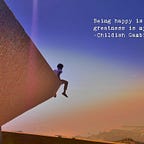Hip Hop and its Youth Audience
When we think about hip-hop historically, it is most notably associated with minority youth all around the world but more specifically in low socio-economic areas around North America. It is not surprising considering hip hop’s birth. It began in the Bronx from African Americans and Latinos and encompassed not only the art of the MC but the role of the DJ, crate master, graffiti, and dancing. In many ways it was people’s expression against the world and reality they lived in. It gave people a sense of community and collective identity. When you think about hip-hop today, it is considered by many as popular music. Popular music would mean it is widely heard and listened to, appreciated, and accessible. When I think about hip-hop today, I feel it has crossed over to this popular music category. The sound is lighter, easier to relate to, and doesn’t deal with content that is too rough and violent. Obviously you still have your gangster rap, but with this social media era, it has been drowned out by other new different style of hip-hop artists.
The accessibility of hip hop now reaches an audience that includes males and females in stable housing conditions that are going to university or college of all races. Hip-hop is now relating to audiences which it really never was suppose to ever reach from its beginning. If you go to a hip-hop concert, more often than not the audience will be a blend of many races if not dominated by white people. There has been a shift in hip hop subculture that puts it in place with all popular music. Artists from the internet and social media era have made this possible with music that touches all audiences. We have artists that discuss their personal problems like dating, and going to college all the way to the police brutality that African American people go through even to this day. Those are subjects a wide range of youth of all races in or out of school can really relate too.
Hip-hop is the most influential popular music we have today. From language to fashion style, it has been able to reach and affect much of the youth. Hip-hop is definitely a cast of characters. It is actually the main reason we find rappers so cool and entertaining. This is important to note because historically, hip hop was looked at as an art form for a specific group of people. It was songs about the “hood “and the oppression that was attached to that. Today, we are seeing less of that and more about the artistic side of the music and the relationship we have with the artist. This personal expression was easy for these newer artists to showcase with what now is social media. A place for artists to put their music out and not have to be mediated by other people. Whether it is right or not, more of the listening audience for hip-hop artists don’t face a lot of the problems that hip-hop originally was meant to protest against. Now it has become more unifying than it was before but in a different way.
Individualism and social media are able to prove that hip-hop has crossed over to the youth audience of popular music. Much of the youth audience within popular music want to listen to an artist that is going to relate to them but also make songs that are catchy and rhythmic. Hip-hop is now looked at more of a radio ready art form. A lighter sound with more of a chorus driven structure. Hip-hop now uses a lot of autotune and experiments with a lot of other popular music. You can see this in mashups done of popular pop, EDM, or house songs with hip-hop songs. Hip-hop like all other popular music is consumed the same way. It is all over social media.
So with that, a lot of the lifestyle rappers portray are what a lot of youth aspire to gain and acquire. It is what they find fun and catchy. Not only that but the youth audience within popular music are able to afford clothing and certain luxuries to them at a reasonable price. A lot of hip-hop artists have aligned themselves with companies such as Zara, H&M, and many others that are accessible to the youth. The music itself is more joyous and having fun with your friends. This provides an social and cultural meaning of togetherness that underlies in the music. To me, all of this really still encompasses the main idea of individualism and social media. With those two things apparent, everything else is noticeable. The individual personalities of these artists and their music is accessible through social media which is accessible to youth audience in popular music. And because of that, popular music audience was able to notice the catchiness of the music, and the fact they were drawn to the artists.
Find me on Twitter! https://mobile.twitter.com/TheQuietKid_23
Consider following my page on Medium! The Quiet Kid
